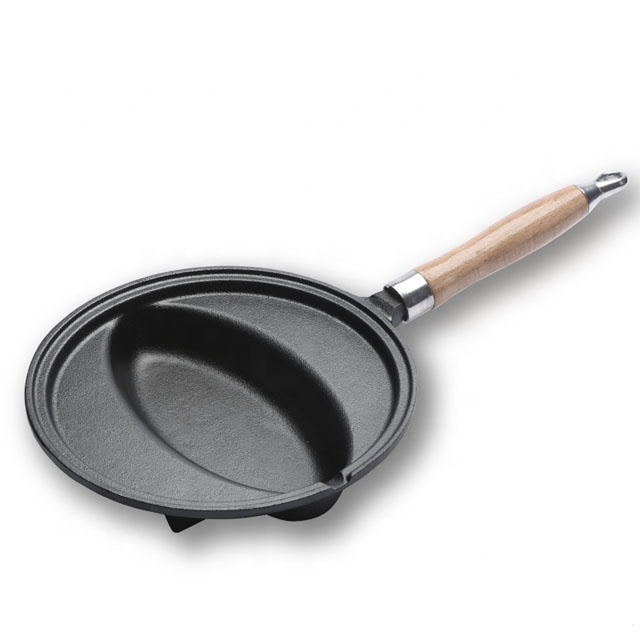
which is better cast iron or enameled cast iron
Cast Iron vs. Enameled Cast Iron Which is Better?
When it comes to cookware, few materials have stood the test of time quite like cast iron. Renowned for its heat retention, durability, and versatile cooking abilities, cast iron has been a kitchen staple for generations. However, enameled cast iron, with its colorful coating and added benefits, has emerged as a strong contender. So, which is better traditional cast iron or enameled cast iron? Let’s delve into the characteristics, benefits, and drawbacks of each to help you make an informed decision.
The Basics of Cast Iron
Cast iron cookware is made from molten iron that is poured into molds to create various shapes, primarily skillets, Dutch ovens, and griddles. The natural non-stick qualities of cast iron develop over time through seasoning, which involves coating the pan with a layer of oil and heating it to create a polymerized layer. This patina not only prevents rust but also adds flavor to dishes, making it ideal for searing meat or frying.
Advantages of Traditional Cast Iron
1. Heat Retention and Distribution One of the primary advantages of cast iron is its impressive heat retention and distribution. Once heated, cast iron pans hold the temperature well, allowing for even cooking. This feature is perfect for slow-cooking, braising, and baking.
2. Durability Cast iron cookware can last for generations if cared for properly. While it may require more maintenance than non-stick alternatives, its longevity makes it a worthy investment.
3. Versatility Cast iron can be used on the stovetop, in the oven, or even over an open flame, making it versatile for various cooking methods. It also performs well at high temperatures, which is ideal for techniques like frying and baking.
4. Natural Non-Stick Surface With proper seasoning, cast iron can develop a naturally non-stick surface that improves over time. It’s a safer alternative to chemical-coated non-stick pans.
The Allure of Enameled Cast Iron
Enameled cast iron offers the durability of traditional cast iron with a porcelain enamel coating that adds both aesthetics and functionality
. Brands like Le Creuset and Staub have popularized these colorful options, but what makes enameled cast iron a compelling choice?which is better cast iron or enameled cast iron

1. Ease of Maintenance Unlike traditional cast iron, enameled cast iron does not require seasoning and is easier to clean. The enamel coating is less porous, making it resistant to staining and odors, which is beneficial for cooking more acidic foods like tomatoes.
2. No Rusting Enameled cast iron is less prone to rust, which adds to its convenience. This aspect can be particularly appealing for those who may not have the time to maintain a traditional cast iron skillet.
3. Aesthetic Appeal Enameled cookware comes in a variety of colors and elegant designs, making it suitable for serving at the table. This aesthetic quality can enhance your dining experience and make food presentation more appealing.
4. Versatility in Cooking Like traditional cast iron, enameled cast iron can also be used on the stovetop and in the oven and is compatible with various heat sources, including induction cooktops.
Drawbacks to Consider
While both types of cast iron have their strengths, they also come with drawbacks. Traditional cast iron requires considerable maintenance to prevent rust and maintain the seasoning, which may not be suitable for everyone. Additionally, it is heavier and can be cumbersome to handle.
Enameled cast iron, while easier to manage, can be more expensive and may chip or crack if dropped. The enamel coating also does not provide the same non-stick quality as well-seasoned cast iron, particularly for delicate tasks such as flipping pancakes or frying eggs.
Conclusion Which Should You Choose?
In the battle of cast iron vs. enameled cast iron, the choice really depends on your cooking habits and preferences. If you enjoy the traditional cooking approach, appreciate the flavors developed through seasoning, and don't mind a little maintenance, traditional cast iron could be your best bet. On the other hand, if you desire ease of cleaning, aesthetic options, and versatility without the need for upkeep, enameled cast iron may be the superior choice for you.
Ultimately, both varieties offer unique benefits, and many passionate cooks find that having both in their kitchen arsenal is the ideal solution. Whether you’re searing a steak in a classic cast iron skillet or braising a hearty stew in a colorful enameled pot, each option has its place in creating delicious home-cooked meals.
-
Premium Deep Cast Iron Pan – Versatile Enameled & Grill Options, Perfect for Frying and SaucesNewsJun.10,2025
-
Chipped Enamel Dutch Oven – Durable & Stylish Kitchen Essential for Even CookingNewsJun.10,2025
-
Best Cast Iron Cookware Set Sale Durable Pots & Woks DealsNewsJun.09,2025
-
Hanging Dutch Oven Oven Safe & Lid IncludedNewsJun.09,2025
-
16 Inch Dutch Oven - Heavy Duty Cast Iron for Large MealsNewsJun.09,2025
-
Premium Cast Iron Bacon Grill Press - Heavy-Duty & Even HeatingNewsJun.09,2025


